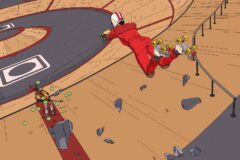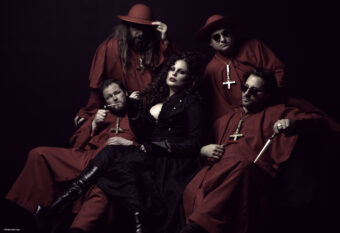For those who grew up playing video games in the late ‘80s and ‘90s, the virtual reality adventures in the Pixel Ripped series will likely feel like a serious blast of nostalgia — presented in the most modern way possible.
The second (and latest) entry in the series, Pixel Ripped 1995, flawlessly channels the experience of being a “‘90s kid” playing their favorite Super Nintendo or Sega Genesis titles. But while you might be focused on battling the baddies on the vintage screen in front of you, your dear old mom is always lurking just around the corner hoping not to catch you playing games while you should be busy with more productive activities.
The immersive experience leads to a game-within-a-game feeling that blends multiple levels of reality in ways that can only be witnessed through virtual reality. Add in some legitimately unique mechanics and a faithful re-creation of that 16-bit gameplay that so many gamers still reminisce about, and Pixel Ripped is a trip down memory lane that won’t soon be forgotten.
SPIN caught up with Ana Ribeiro and her small team at the Brazil-based ARVORE Immersive Experiences to talk about the neo-retro title.
SPIN: What inspired you to create a game like Pixel Ripped instead of sticking with something more traditional?
Ana Ribeiro (Creative Director): This was a student project back in 2013 when I was studying in England, and the big inspiration came from playing games as a child. I wanted to build a time machine that would allow people to relive those moments again and see the evolution of video games, so that was kind of the kickoff of this project. The original plan was to make one game where each level is a different year, but that was really ambitious, so we ended up making a game with different episodes, and release each year as a separate game.
How different was it to make this game-within-a-game experience in virtual reality as opposed to designing a game for a flat-screen?
Rodrigo Blanco (Lead Artist): I think there’s no clear path [for VR] because the medium is so new. Something that we practice a lot — and something Ana is always pushing for — is how can we make it so the VR aspect of it is more astounding or more marvelous. That’s why in the boss fights, we like to mix up the elements and have the games on the screen come to the real world. It lets us be more creative with the VR aspects, and it’s awesome. The mechanic of a boss fight is simple — and you see it in other games — that’s why we add in elements where you have to do something with your hands to interact with the game. It’s more of a thought exercise for us to see what feels more creative. We discuss them a lot until we agree on something that’s awesome, and those ideas can come from anyone on the team.
What went into channeling those feelings of nostalgia for the ‘90s in Pixel Ripped?
Ribeiro: I think that one of the biggest differences in [Pixel Ripped] 1995 is the narrative that Barbara [Framil, Narrative Designer] wrote, and she did a great job of capturing that feeling. In [the first game in the series, Pixel Ripped] 1989, we didn’t really have a narrative, but with Barbara, we were able to explore so many more things than we could before through her narrative. She’s really young, but she studies a lot to know about retro gaming, and she loves it.
Barbara Framil: I was actually born in 1995, but I had played Pixel Ripped 1989 before I joined the team. Even though I wasn’t born in 1989, the game had already spoken a lot to me. The series isn’t only about the feeling of being back there at the time, but feeling like you’re a kid again — the feeling of childhood nostalgia. When I was writing for 1995, I wanted to capture that feeling of childhood for different people of different ages, because childhood can mean different things. But being a gamer child, there’s something very unique where everyone could feel the same way — and that’s what I tried to pour into this world.
Blanco: We had to figure out how to represent the ‘90s for our audience, who are all in different countries all around the world. We wanted to make it very stylized and exaggerated, so we went full-on pop culture that everyone could relate to. It’s not always the kind of stuff you would normally see in real life, but it was how the ‘90s were portrayed through TV, which is how people remember it in their head.
For the soundtrack, it’s a fine balance of classic video game chiptunes with a more complex score for the “real world.” How did you create that balance?
Rafael Langoni (Composer): We had to make up a new kind of chip-style scoring, because we originally wanted the music outside of the game to be a full orchestra to give us a more common range of emotional colors, but then we found that there was too much contrast with the “inside game” tracks — which are made on old consoles by a tracker person on our team who transfers my arrangements into a cartridge, so it’s actually a [Sega] Mega Drive playing most of the music, along with a [Sony] PlayStation and a [Nintendo] Game Boy. For the soundtrack outside of the game, we had to improvise and find a compromise between the chiptune sound and the real world music.




